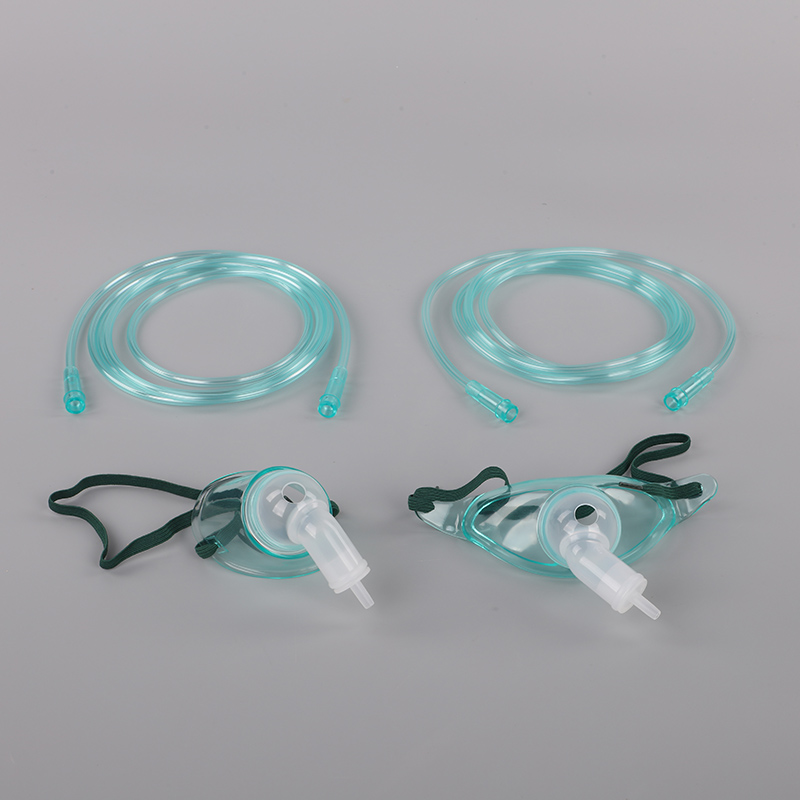-



Oxygen Therapy: Nasal Cannula Or Oxygen Mask
Views: 666 Author: Site Editor Publish Time: 2024-07-01 Origin: Site

Understanding the Role of Oxygen Therapy in Modern Healthcare
Oxygen therapy plays a critical role in managing hypoxemia across a wide range of medical conditions—from chronic obstructive pulmonary disease (COPD) and pneumonia to surgical recovery and emergency care. With respiratory illnesses becoming more prevalent worldwide, especially post-pandemic, healthcare providers are placing greater emphasis on delivering precise and patient-tailored oxygen support.
Oxygen can be administered through several methods, with the nasal cannula and the oxygen mask being the most commonly used interfaces. Each device serves a specific purpose, and selecting the right one is vital for patient comfort, clinical effectiveness, and infection control.
With evolving clinical needs, there's a growing demand for oxygen delivery solutions that are not only efficient but also user-friendly, safe, and adaptable to various settings such as hospitals, home care, ambulances, and mobile clinics.
Key Differences Between Nasal Cannula and Oxygen Mask
Nasal Cannula
A nasal cannula is a lightweight tube with two small prongs that fit into the nostrils. It is often preferred for patients who require low to moderate oxygen flow rates (typically 1–6 L/min) and are breathing spontaneously.
Its primary benefits include:
Greater comfort and tolerance, especially for long-term use
Allows patients to eat, speak, and drink without interruption
Minimal obstruction and enhanced mobility
However, it may not be suitable for patients needing higher oxygen concentrations or those with significant nasal obstructions.
Oxygen Mask
An oxygen mask is designed to cover the nose and mouth, delivering higher concentrations of oxygen compared to nasal cannulas. It is commonly used in moderate to severe cases of respiratory distress, acute illness, or during transport in emergency settings.
Several types of masks exist, including:
Simple face masks (delivering 5–10 L/min)
Venturi masks for controlled oxygen delivery
Non-rebreather masks for high-concentration oxygen (up to 100%)
The key advantages of an oxygen mask include:
Higher FiO₂ delivery
Ideal for patients with mouth-breathing tendencies
Useful in acute care and surgical environments
However, it can restrict speech and eating, and prolonged use without humidification can lead to dryness and discomfort.
In situations where oxygen delivery must be maximized or precisely regulated, clinicians often turn to oxygen masks due to their reliable performance. For healthcare providers looking to optimize patient outcomes, having access to a broad selection of oxygen therapy interfaces is essential.
Clinical Applications and Selection Criteria
The choice between a nasal cannula and an oxygen mask depends on multiple factors, including:
Patient's respiratory rate and pattern
Level of oxygen saturation (SpO₂)
Consciousness and ability to protect the airway
Need for precise FiO₂ control
Duration and environment of therapy (ICU, ward, home, transport)
For example:
Post-operative patients recovering from anesthesia may benefit from a nasal cannula for low-flow oxygen maintenance.
In contrast, patients with acute pulmonary edema, trauma, or severe asthma attacks may require a non-rebreather oxygen mask for high-flow therapy.
Recent trends have also highlighted the need for single-use, disposable options to prevent cross-contamination. Modern oxygen masks now incorporate adjustable straps, soft sealing materials, and clear materials for better patient monitoring. As hospitals increasingly focus on infection control, disposable and sterilized oxygen therapy devices are becoming the standard.
Recent Trends and Evolving User Needs
The healthcare industry continues to shift toward patient-centric oxygen solutions. Key developments include:
Integration of humidification systems to improve comfort
Development of oxygen mask with reservoir bag for portable and ambulance use
Increased demand for lightweight, low-resistance cannulas for elderly and pediatric patients
Emphasis on masks with anti-asphyxia valves and transparent bodies for quick visual assessment
Healthcare professionals are now prioritizing oxygen devices that are easy to apply, reduce pressure ulcers, and ensure patient compliance. As chronic respiratory conditions rise globally, home oxygen therapy is also expanding. Providers are sourcing multi-setting oxygen therapy devices that can seamlessly transition between hospital and home care without compromising quality.
Whether used in emergency wards or outpatient respiratory clinics, both nasal cannulas and oxygen masks remain central to therapeutic respiratory support.
Conclusion: Equip Your Facility With The Right Oxygen Delivery Systems
In clinical practice, there is no one-size-fits-all solution. The appropriate selection between a nasal cannula and an oxygen mask depends entirely on patient needs, therapy goals, and care settings. Understanding their differences allows clinicians to make informed decisions that enhance both efficacy and patient comfort.
Our comprehensive range of oxygen therapy solutions is designed to meet the demands of today’s medical environments—combining innovation, performance, and safety. From basic oxygen masks to advanced delivery systems, we provide customizable options to ensure you are equipped for every scenario.
To discover more about our high-quality, clinically tested oxygen delivery products or to discuss procurement needs for your hospital, EMS unit, or healthcare facility, contact our team directly. We are committed to providing the tools you need for superior respiratory care.
Related News
CONTACT US
NO.176, Gaoxin 5th Road, High-tech Industrial Park, Rizhao City276800, Shandong Province, China +86-13396234532 +86-13396234532Copyright © 2023 ZhenFu Group All Rights Reserved. Technology By leadong.com | Sitemap | Privacy Policy



















